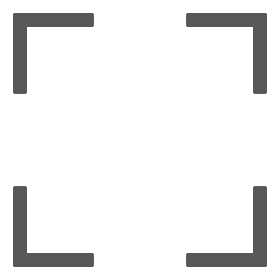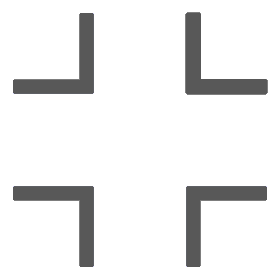C++14指北:花里胡哨的C++
类型!
在最经典的 C++ 代码中,我们使用类似 类型名 变量名 = 表达式; 的形式声明并初始化变量,例如
int x = 1;
int y = x;
在上面代码中,我们知道 y 理应与 x 的类型相同,但是在上面代码中,如果我们后来把 x 的类型修改为 int64_t,而忘记对应地修改 y 的类型,则可能导致灾难性的后果。对此,我们最简单的做法是使用类型别名。在 C++ 中,可以使用 using 声明类型别名:
using my_int = int;
my_int x = 1;
my_int y = x;
我们也可以使用 decltype 说明符,这是在 C++11 中添加的新关键字:
int x = 1;
decltype(x) y = x;
decltype 关键字接受一个表达式,得到该表达式的类型。与 sizeof 类似,decltype 的操作数仅作为类型推导使用,并不会在运行时真正被求值。
验证 `decltype` 不会进行求值
考虑下面代码:
#include <cstdio>
int func() {
std::puts("called!");
return 0;
}
int main() {
decltype(func()) a = 1;
return 0;
}
执行后无输出,说明 decltype 的操作数不会在运行时进行求值。
`decltype` 可以保留 `void`、指针、值类型和类型限定符
查看类型推导结果
我们可以使用声明但未定义的模板函数来查看类型推导结果:
template<typename T>
void func();
该函数会阻止程序正确链接,链接器会按顺序汇报所缺失的函数特化,根据其报错信息即可得到 T 的类型。
考虑如下代码:
#include <utility>
template<typename T>
void func();
void void_func();
int main() {
int y;
int &y2 = y;
int *y3;
const int * volatile *y4;
func<decltype(y)>();
func<decltype(std::move(y))>();
func<decltype(y2)>();
func<decltype(y3)>();
func<decltype(y4)>();
return 0;
}
链接时,你会得到类似于如下的报错信息:
a.cpp:(.text+0x16): undefined reference to `void func<int>()'
a.cpp:(.text+0x1b): undefined reference to `void func<int&&>()'
a.cpp:(.text+0x20): undefined reference to `void func<int&>()'
a.cpp:(.text+0x25): undefined reference to `void func<int*>()'
a.cpp:(.text+0x2a): undefined reference to `void func<int const* volatile*>()'
a.cpp:(.text+0x2f): undefined reference to `void func<void>()'
collect2: error: ld returned 1 exit status
这说明,decltype 推导可以正确保留 void、指针、引用和类型限定符(const 和 volatile)。
值得注意的是,被括号包裹的标识符表达式或类成员访问表达式将被推导为左值:
template<typename T>
void func();
int main() {
int y0 = 1;
func<decltype(y0)>();
func<decltype((y0))>();
return 0;
}
这将产生类似于如下的链接错误:
a.cpp:(.text+0x15): undefined reference to `void func<int>()'
a.cpp:(.text+0x1a): undefined reference to `void func<int&>()'
collect2: error: ld returned 1 exit status
同时使用类型别名和 decltype 推导,我们可以把一些较长的类型名称存储下来,例如:
std::vector<int> a;
using It = decltype(a.begin());
不经过构造函数直接使用成员函数
std::declval 可以将任意类型 T 转换成引用类型,使得在 decltype 的操作数中不必经过构造函数就能使用成员函数。考虑下面代码,由于结构体 A 没有构造函数,于是不能通过编译:
struct A {
A() = delete;
int foo();
};
int main() {
decltype(A().foo()) x;
return 0;
}
使用 std::declval 即可解决这个问题:
#include <utility>
struct A {
A() = delete;
int foo();
};
int main() {
decltype(std::declval<A>().foo()) x;
return 0;
}
当然,许多时候 decltype 也是不方便的,大部分时候所需的类型是与初始化表达式一致的,而使用 decltype 会导致大量重复,考虑下面代码:
int x = 1;
decltype(func(x) * 2LL) y = func(x) * 2LL;
这时,我们就可以使用大名鼎鼎的占位类型说明符 auto 来简化代码:
int x = 1;
auto y = func(x) * 2LL;
自 C++14 起,函数的返回值(如果可以自动推导)也可以是 auto:
auto add(int x, int y) {
return x + y;
}
不能进行返回类型推导的几种常见情况
函数在形式上有多个 return,且这些 return 返回的类型不相同(即使可以隐式类型转换):
auto func(int x) {
if (x) return 1LL;
return 0;
}
函数返回初始化列表:
auto func() {
return {1, 2};
}
要求 auto*,但是返回值不是指针:
auto* func(int x) {
return x;
}
在递归前不存在可推导的返回语句:
auto func(int x) {
return x == 0 ? 0 : func(x - 1);
}
作为对比,下面写法是可以的:
auto func(int x) {
if (x == 0) return 0;
return func(x - 1);
}
虚函数不能使用返回类型推导:
struct F {
virtual auto f() {
return 2;
}
};
占位符 auto 本身会丢失类型限定符,因此占位符 auto 可伴随如 const 或 & 这样的修饰符,它们参与类型推导。考虑下面代码:
template<typename T>
void func();
int main() {
int y0 = 1;
const int &y1 = y0;
auto y2 = y1;
func<decltype(y1)>();
func<decltype(y2)>();
return 0;
}
链接时得到的报错信息类似于:
a.cpp:(.text+0x26): undefined reference to `void func<int const&>()'
a.cpp:(.text+0x2b): undefined reference to `void func<int>()'
collect2: error: ld returned 1 exit status
使用在 C++14 中加入的 decltype(auto) 即可避免这个问题,decltype(auto) 会完全忠实于初始化表达式右侧的类型,如同将其带入 decltype 说明符一般:
template<typename T>
void func();
int main() {
int y0 = 1;
const int &y1 = y0;
decltype(auto) y2 = y1;
func<decltype(y2)>(); // undefined reference to `void func<int const&>()'
return 0;
}
迭代器!
迭代器是一种广义化的指针,它使得 C++ 程序可以通过统一的方式处理不同的数据结构。迭代器库提供了迭代器的定义,同时还提供了迭代器特征、适配器及相关的工具函数。
因为迭代器是指针的抽象,所以它们的语义是 C++ 的指针的大多数语义的泛化。这确保指针能够用于所有接受迭代器的函数模板。
最基本的迭代器用法看起来是这样的:
#include <vector>
#include <cstdio>
int main() {
std::vector<int> a{1, 2, 3, 4};
for (auto it = a.begin(); it < a.end(); ++it) std::printf("%d\n", *it);
return 0;
}
我们的代码并不需要修改这个 std::vector,因此可以使用不可变迭代器,这在需要遍历的数组是不可变时格外有用:
#include <vector>
#include <cstdio>
int main() {
const std::vector<int> a{1, 2, 3, 4};
for (auto it = a.cbegin(); it < a.cend(); ++it) std::printf("%d\n", *it);
return 0;
}
使用范围 for 循环的语法糖,上面代码可以改写成这样:
#include <vector>
#include <cstdio>
int main() {
std::vector<int> a{1, 2, 3, 4};
for (int x : a) std::printf("%d\n", x);
return 0;
}
如果需要使用范围 for 循环的语法糖的同时强调其不可变性,则可以使用 std::as_const:
#include <vector>
#include <cstdio>
// std::as_const 需要 C++17,下面是一个可用的低版本替代实现
// template<typename T> struct add_const_t { using type = const T; };
// template<typename T> typename add_const_t<T>::type& as_const(T& t) noexcept { return t; }
// template<typename T> void as_const(const T&&) = delete;
using std::as_const;
int main() {
std::vector<int> a{1, 2, 3, 4};
for (int x : as_const(a)) std::printf("%d\n", x);
return 0;
}
如果我们想要反向遍历容器,可以使用反向迭代器(可以使用 rcbegin() 和 rcend 表示反向不可变迭代器):
#include <vector>
#include <cstdio>
int main() {
std::vector<int> a{1, 2, 3, 4};
for (auto it = a.rbegin(); it < a.rend(); ++it) std::printf("%d\n", *it);
return 0;
}
通过上面初步认识,我们意识到迭代器和指针很相像。但是其比指针更加灵活,例如我们可以用迭代器遍历内部是树形结构而非顺序结构的 std::set:
#include <set>
#include <cstdio>
int main() {
std::set<int> a{1, 2, 3, 4};
for (int x : a) std::printf("%d\n", x);
return 0;
}
std::vector 允许随机访问,因此写出 a.begin() + 5 是合理的,时间复杂度为 \(O(1)\),但是 std::set 并不支持这一点,它只支持迭代器自增和自减,且时间复杂度为 \(O(\log n)\)。这说明,迭代器有不同的类型,有些可以支持更多的功能。
标准库中 std::advance、std::distance、std::next、std::prev 几个函数提供了对迭代器的基本操作。具体而言,
std::advance:接受一个迭代器it和一个距离d(可为负值)作为参数,将增加给定的迭代器it以d个元素的步长;std::distance:接受两个迭代器first和last作为参数,返回从first到last的路程(若last不可从first通过若干次自增first抵达,则行为未定义);std::next:接受一个迭代器it和一个距离n(默认值为 \(1\))作为参数,返回迭代器it的第n个后继;std::prev:接受一个迭代器it和一个距离n(默认值为 \(1\))作为参数,返回迭代器it的第n个前驱。
标准库中有大量的函数接受迭代器作为参数,例如我们耳熟能详的 std::sort、std::reverse、std::unique 、std::shuffle 等。下面介绍几个使用迭代器的标准库函数。
std::fill、std:count、std::iota 三个函数接受两个迭代器 first 和 last 以及一个值 value 作为其参数,它们的作用分别如下:
std::fill:赋值给定的value给范围[first, last)中的元素;std::count:计数在范围范围[first, last)中等于value的元素;std::iota:以始于value并重复地求值++value的顺序递增值填充范围[first, last)。
std::copy、std::copy_backward、std::move、std::move_backward 四个函数接受三个迭代器 s_first、s_last 和 d_first 作为其参数,它们的作用分别如下:
std::copy:复制[s_first, s_last)所定义的范围中的元素到始于d_first的另一范围(若d_first包含于[s_first, s_last)则行为未定义);std::copy_backward:从后向前复制[s_first, s_last)所定义的范围中的元素到始于d_first的另一范围;std::move:移动[s_first, s_last)所定义的范围中的元素到始于d_first的另一范围(若d_first包含于[s_first, s_last)则行为未定义);std::move_backward:从后向前移动[s_first, s_last)所定义的范围中的元素到始于d_first的另一范围;
std::fill_n 函数接受一个迭代器 first、一个长度 n 以及一个值 value 作为其参数,其作用是将给定的 value 赋给从 first 开始的范围的首 n 个元素,若 \(n\leq 0\) 则不做任何事。
std::copy_n 函数接受一个迭代器 first、一个长度 n 以及另一个迭代器 res 作为其参数,其作用是准确复制来自始于 first 的范围的 n 个值到始于 res 的范围,若 \(n\leq 0\) 则不做任何事。
除了用于访问元素的迭代器,一些容器还支持插入迭代器 std::inserter_iterator,下面是一个使用 std::back_inserter 的例子(需要容器支持 push_back 操作):
#include <vector>
#include <cstdio>
int main() {
std::vector<int> a{1, 2, 3, 4};
auto it = std::back_inserter(a);
*it = 1;
*it = 2;
for (int x : a) {
printf("%d ", x);
}
return 0;
}
上面的代码输出:
1 2 3 4 1 2
搭配使用需要输出迭代器的函数会很方便:
#include <bits/stdc++.h>
int main() {
std::vector<int> a{1, 2, 3, 4};
std::fill_n(std::back_inserter(a), 3, 5);
for (int x : a) {
printf("%d ", x);
}
return 0;
}
上面的代码输出:
1 2 3 4 5 5 5
类似的还有 std::front_inserter 用于在容器开头插入(需要支持 push_front)以及 std::inserter 用于在容器的特定位置插入(需要支持 insert),下面例子指出了 std::inserter 可以很好地搭配 std::set:
#include <bits/stdc++.h>
int main() {
std::set<int> a{1, 2, 3, 4};
std::vector<int> b{7, 8, 9};
std::copy(b.begin(), b.end(), std::inserter(a, a.end()));
for (int x : a) {
printf("%d ", x);
}
return 0;
}
上面的代码输出:
1 2 3 4 7 8 9
输入输出迭代器(std::istream_iterator 和 std::ostream_iterator)赋予了将输入输出流当做迭代器的能力:
#include <bits/stdc++.h>
int main() {
std::istringstream in("5 1 2 3 4 5");
int n;
in >> n;
std::vector<int> a;
std::copy_n(std::istream_iterator<int>(in), n, std::back_inserter(a));
std::copy(a.begin(), a.end(), std::ostream_iterator<int>(std::cout, " "));
return 0;
}
上面的代码输出:
1 2 3 4 5
也可以将上面代码的 in 改为 std::cin,这将改为由标准输入流输入数据。
函数!
函数作为在内存中的代码片段,我们可以取其地址存放在变量中,这个过程是隐含的:
#include <cstdio>
int add(int x, int y) {
return x + y;
}
int main() {
using add_type = int (*)(int, int);
add_type a = add; // 隐式取址,等价于 &add
std::printf("%d\n", a(1, 2));
return 0;
}
当然,上面代码也可以直接使用 auto 而不必显式地定义 add_type 类型,这里只是为了说明一个函数指针的类型是:
返回类型 (*) (参数类型列表)
一个具有实践意义的例子是 std::sort 的比较函数:
#include <cstdio>
#include <algorithm>
bool cmp(int x, int y) {
return x > y;
}
int main() {
std::vector<int> a{1, 2, 3, 4};
std::sort(a.begin(), a.end(), cmp);
for (auto x : a) std::printf("%d\n", x);
return 0;
}
我们给 std::sort 传入作为第三个参数的比较函数就是使用函数指针的方式传入的。当然,你可能知道标准库中的 std::greater,这将大幅简化代码:
#include <cstdio>
#include <functional>
#include <algorithm>
int main() {
std::vector<int> a{1, 2, 3, 4};
std::sort(a.begin(), a.end(), std::greater<>()); // C++ 14 允许省略可推导的模板参数
// 在此之前则需要在尖括号中指明 int
for (auto x : a) std::printf("%d\n", x);
return 0;
}
那么 std::greater<>() 到底是什么?事实上,std::greater 是一个仿函数,它本质上是一个实现了 operator() 的结构体:
#include <cstdio>
#include <algorithm>
struct greater {
bool operator()(int x, int y) {
return x > y;
}
};
int main() {
std::vector<int> a{1, 2, 3, 4};
std::sort(a.begin(), a.end(), greater());
for (auto x : a) std::printf("%d\n", x);
return 0;
}
在 C++11 中,我们迎来了一个新的语法(糖),使用 Lambda 表达式来创建一个“函数”:
#include <cstdio>
#include <algorithm>
int main() {
std::vector<int> a{1, 2, 3, 4};
std::sort(a.begin(), a.end(), [](int x, int y) -> bool {
return x > y;
});
for (auto x : a) std::printf("%d\n", x);
return 0;
}
你可能意识到了,Lambda 表达式本质上就是创建仿函数结构体的一个语法糖而已,因此即使两个 Lambda 拥有相同的返回类型和参数列表,它们的类型也不是相同的,下面代码验证了这一点:
#include <cstdio>
template<typename T, typename U>
struct is_same_helper {};
template<typename T>
struct is_same_helper<T, T> {
using type = int;
};
template<typename T, typename U>
void _is_same(char x) {
std::puts("not same!");
}
template<typename T, typename U>
void _is_same(typename is_same_helper<T, U>::type x) {
std::puts("same!");
}
template<typename T, typename U>
void is_same() {
_is_same<T, U>(0);
}
int main() {
auto func1 = [](int, int) {};
auto func2 = [](int, int) {};
is_same<decltype(func1), decltype(func2)>(); // 输出 not same!
}
一般而言,Lambda 表达式可以省略其不需要的部分,下面均为合法的 lambda 表达式:
[] {}
[] (int x) {}
[sum = 0] (int x) mutable noexcept -> void {}
Lambda 表达式最开始的方括号是不可省略的,它被称为 Lambda 表达式的捕获列表,它可以以一个默认捕获符开始:
&(以引用隐式捕获被使用的自动变量);=(以复制隐式捕获被使用的自动变量)。
随即是要捕获的变量的列表,若变量名以 & 作为前缀,则其是引用捕获的,否者是值捕获的。这两种捕获模式的区别在于:
- 引用捕获可用于修改外部变量,而值捕获却不能实现此操作;
- 引用捕获会反映外部变量的更新,而值捕获不会。
Lambda 默认不可变
Lambda 表达式的值捕获变量默认是不可变的,下面代码将产生编译错误:
int main() {
int x = 1;
auto func1 = [x] {
x = 2;
};
return 0;
}
如果将 Lambda 修饰为 mutable,则允许修改这些变量的副本:
#include <cstdio>
int main() {
int x = 1;
auto func1 = [x]() mutable {
x = 2;
std::printf("%d\n", x);
};
func1();
std::printf("%d\n", x);
return 0;
}
上面代码输出为:
2
1
Lambda 与悬空引用
Lambda 表达式并不会延长所引用捕获的变量的声明周期:
#include <cstdio>
auto make() {
int x = 1;
return [&x](int y) {
return x = x + y;
};
}
int main() {
auto func = make();
printf("%d\n", func(1));
return 0;
}
上面代码在 make 函数返回后,其中的 x 生命周期结束,但是其返回的 func 还保有对 x 的引用,这时这个引用变为悬空引用,调用 func 的行为是未定义的。
一个值得注意的例外是,如果 Lambda 使用了以引用捕获的引用,那么它使用原引用所指代的对象,而非被捕获的引用自身,因此下面代码是可行的:
> #include <cstdio>
auto make_function(int& x) {
return [&]{ std::printf("%d\n", x); };
}
int main() {
int i = 3;
auto f = make_function(i); // f 中对 x 的使用直接绑定到 i
i = 5;
f(); // 输出 5
}
容易看出,Lambda 表达式的捕获列表,本质上是仿函数结构体中的成员变量,例如下面 Lambda 表达式:
#include <cstdio>
int main() {
int x = 1, y = 2;
auto func = [&x, y] {
x += y;
};
func();
std::printf("%d\n", x); // 输出 3
return 0;
}
可以使用仿函数结构体重写为:
#include <cstdio>
int main() {
int x = 1, y = 2;
struct _lambda_func {
int &x;
const int y;
_lambda_func(int &x, int y) : x(x), y(y) {}
void operator()() {
x += y;
}
} func(x, y);
func();
std::printf("%d\n", x); // 输出 3
return 0;
}
在 C++14 后,我们可以进行带初始化器的捕获,即在捕获子句中引入和初始化新变量,而无需将这些变量声明于 Lambda 函数的封闭范围内。初始化可以任何任意表达式表示,它的行为如同它声明并显式捕获一个以类型 auto 声明的变量,该变量的声明区是 Lambda 表达式体,但:
- 如果以复制捕获,那么闭包对象的非静态数据成员是指代这个
auto变量的另一种方式。 - 如果以引用捕获,那么引用变量的生存期在闭包对象的生存期结束时结束。
下面代码将输出 1:
#include <cstdio>
int main() {
int x = 1;
auto func = [x = x]() {};
std::printf("%d\n", func.x);
}
在 C++14 中,如果参数类型是泛型,则可以使用 auto 关键字作为类型说明符。 此关键字将告知编译器将函数调用运算符创建为模板。 参数列表中的每个 auto 实例等效于一个不同的类型参数。例如:
#include <cstdio>
#include <algorithm>
int main() {
std::vector<int> a{1, 2, 3, 4};
std::sort(a.begin(), a.end(), [](auto x, auto y) {
return x > y;
});
for (auto x : a) std::printf("%d\n", x);
return 0;
}
从现在开始,除非特殊说明,我们提及“函数”这个词实际上是指任何可调用的东西,包括函数指针,仿函数和 Lambda。为了方便起见,我们把返回类型为 bool 的函数称为谓词,只接受一个参数的函数称为一元函数,只接受一个参数的谓词被称为一元谓词。
下面介绍几个需要一元谓词的标准库函数:
std::all_of、std::any_of、std::none_of、std::count_if、std::find_if、std::find_if_not 六个函数接受两个迭代器 first 和 last 以及一个一元谓词 p 作为参数,它们的功能分别是:
std::all_of:检查一元谓词p是否对范围[first, last)中所有元素返回true;std::any_of:检查一元谓词p是否对范围[first, last)中至少一个元素返回true;std::none_of:检查一元谓词p是否不对范围[first, last)中任何元素返回true;std::count_if:计数一元谓词p对范围[first, last)中多少个元素返回true;std::find_if:返回一元谓词p对范围[first, last)中首个返回true的元素的迭代器,未找到则返回last;std::find_if_not:返回一元谓词p对范围[first, last)中首个不返回true的元素的迭代器,未找到则返回last。
std::for_each 函数接受两个迭代器 first 和 last 以及一个一元函数 f 作为参数,它按顺序应用给定的函数对象 f 到解引用范围 [first,last) 中每个迭代器,返回 f 的右值引用。特别地,如果迭代器类型是可变的,那么 f 可以通过解引用后的迭代器修改范围的元素。忽略 f 返回的结果。
我们可以使用 std::for_each 来将一个函数应用到一个序列的每个元素上,下面代码会把 a 中的每个元素翻倍:
#include <cstdio>
#include <vector>
#include <algorithm>
int main() {
std::vector<int> a{1, 2, 3, 4};
std::for_each(a.begin(), a.end(), [](int &x) {
x *= 2;
});
for (int x : a) std::printf("%d\n", x);
return 0;
}
由于 std::for_each 返回 f 的右值引用,结合带有有初始化器的捕获的 Lambda,可以完成一些复杂的统计,下面代码计算 a 中元素的平方和:
#include <cstdio>
#include <vector>
#include <algorithm>
int main() {
std::vector<int> a{1, 2, 3, 4};
std::printf("%d\n", std::for_each(a.begin(), a.end(), [sum = 0](int &x) mutable {
sum += x * x;
}).sum);
return 0;
}
std::transform 函数接受三个迭代器 s_first、s_last 和 d_first 以及一个一元函数 f 作为参数,应用给定的函数到范围 [s_first, s_last) 并将结果存储到始于 d_first 的范围。下面代码将字符串 a 转化为大写字母:
#include <bits/stdc++.h>
int main() {
std::string a{"hello!"};
std::transform(a.cbegin(), a.cend(), a.begin(), [](auto x) { return std::toupper(x); });
std::printf("%s\n", a.c_str());
return 0;
}
std::copy_if 函数接受三个迭代器 s_first、s_last 和 d_first 以及一个一元谓词 p 作为参数,复制范围 [s_first, s_last) 中的所有谓词 p 返回 true 的元素到始于 d_first 的范围。下面代码将输出 a 中所有的偶数:
#include <bits/stdc++.h>
int main() {
std::vector<int> a{1, 2, 3, 4};
std::copy_if(a.begin(), a.end(), std::ostream_iterator<int>(std::cout, " "), [](int x) {
return x % 2 == 0;
});
return 0;
}
std::generate 函数接受两个迭代器 first 和 last 以及一个无参数的函数 f 作为参数,以给定函数对象 f 所生成的值赋值范围 [first, last) 中的每个元素。
std::generate_n 函数接受一个迭代器 first 和长度 n 以及一个无参数的函数 f 作为参数,赋值给定函数对象 f 所生成的值给始于 first 的范围的首 n 个元素,若 \(n\leq0\) 则不做任何事。下面代码将向标准输出流输出 5 个随机数:
#include <bits/stdc++.h>
int main() {
std::mt19937 rng(std::random_device{}());
std::generate_n(std::ostream_iterator<int>(std::cout, " "), 5, std::ref(rng));
return 0;
}


 浙公网安备 33010602011771号
浙公网安备 33010602011771号


